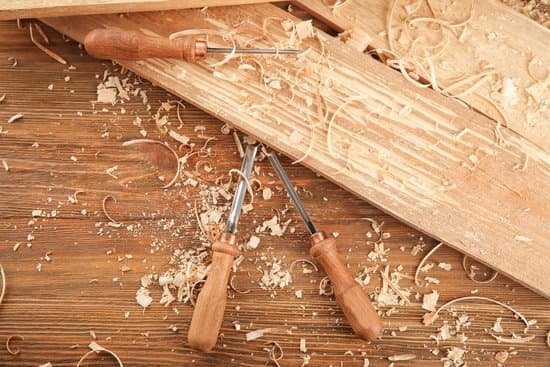What is a router table for woodworking? A router table is a stationary woodworking machine in which the spindle of a handheld router protrudes from the table, allowing the user to perform various woodworking tasks.
This versatile tool is essential for woodworkers of all levels, providing stability and precision that are unattainable with a handheld router alone. In this article, we will explore the ins and outs of router tables, from their basic functions to the different types available on the market.
Router tables serve as a stable platform for your router, allowing you to work with precision and control. Whether you are shaping edges, making grooves, or creating intricate joinery, a router table is an invaluable tool in any woodworker’s arsenal. With the right knowledge and techniques, you can take your woodworking projects to the next level using this versatile machine.
In this article, we will delve into the basics of working with a router table, explore its advantages, discuss the different types of router tables available, and provide safety tips for using them. Additionally, we will cover essential accessories for maximizing your router table’s potential and offer maintenance tips to keep it running smoothly.
Whether you are new to woodworking or an experienced craftsman looking to expand your capabilities, understanding how to choose and use a router table effectively is crucial for success in various woodworking projects.
The Basics of Woodworking With a Router Table
A router table is a useful tool for woodworkers of all skill levels. It consists of a stationary work surface with a mounted router, allowing users to guide the wood over the router bit instead of maneuvering the tool itself. This section will cover the basics of woodworking with a router table and how it can improve efficiency and precision in your projects.
When using a router table for woodworking, there are several key techniques to keep in mind. These include:
- Routing edges: With the help of a fence, you can easily route clean, straight edges on your wooden pieces.
- Creating joinery: Router tables are ideal for creating smooth and precise joinery such as dovetails, box joints, and dadoes.
- Shaping profiles: Using various router bits, you can shape decorative profiles on the edges of your wood pieces.
In addition to these techniques, it’s important to understand how to properly set up and adjust the router table for different woodworking tasks. This involves adjusting the speed and depth of cut, as well as selecting the appropriate router bit for the desired outcome. Understanding these basics will help you achieve professional-looking results in your woodworking projects.
Advantages of Using a Router Table for Woodworking
A router table is an essential tool for any woodworking enthusiast, offering numerous advantages that can improve the quality and efficiency of your projects. Whether you are a beginner or a seasoned woodworker, understanding the benefits of using a router table can help you make the most out of this versatile equipment.
Increased Precision and Accuracy
One of the biggest advantages of using a router table for woodworking is the increased precision and accuracy it provides. The stable and flat surface of the table allows for more control over the wood and the router, resulting in cleaner cuts and more uniform edges. This level of precision is especially beneficial when working on intricate designs or joinery that require attention to detail.
Safety and Stability
Using a router freehand can be risky, as it requires balancing the weight of both the router and the material being worked on. A router table eliminates this issue by providing a stable and secure platform for your woodworking projects. This not only reduces the risk of accidents but also allows you to focus on your technique without worrying about stability.
Versatility and Efficiency
Another advantage of using a router table is its versatility. With the ability to adjust fence settings, depth of cut, and other features, a router table allows for a wide range of woodworking applications such as edge profiling, rabbeting, slot cutting, and more. Additionally, having both hands free to guide the material through the router makes tasks more efficient compared to handheld routing.
Types of Router Tables and Their Features
When it comes to types of router tables, there are several options to choose from, each with its own set of features and benefits. Whether you’re a beginner or a seasoned woodworker, selecting the right router table for your needs is crucial for achieving professional results.
Here are some common types of router tables and their features:
- Benchtop Router Tables: These compact and portable tables are perfect for small workshops or on-site jobs. They can be easily placed on a workbench or table, making them versatile and convenient.
- Floor-Standing Router Tables: Ideal for larger woodworking projects, these tables come with a sturdy stand that provides stability and support. They often have additional storage space and built-in dust collection systems.
- Extension Router Tables: These tables are designed to attach to an existing table saw or workbench, providing added versatility and saving space in the workshop.
- Cabinet Router Tables: Offering ample storage space and a durable enclosed cabinet base, these tables are suitable for professional woodworkers and serious hobbyists who require maximum stability and precision.
Each type of router table comes with its own unique set of features, such as adjustable fences, miter gauges, featherboards, dust ports, and insert plates for mounting the router. It’s important to consider your specific woodworking needs and available space when choosing the right type of router table for your workshop.
Understanding the features of different router tables will help you make an informed decision when it comes to investing in this essential woodworking tool. Whether you prioritize portability, stability, or additional storage space, there is a router table that will suit your requirements. Keeping these features in mind will ensure that you select the best router table for your woodworking projects.
Essential Accessories for Router Tables
Router tables are essential tools for woodworking, allowing craftsmen to create intricate designs and precise cuts in wood. To maximize the efficiency and versatility of a router table, it is important to have the right accessories. These accessories can enhance the functionality of the router table, improve safety, and provide better results for woodworking projects.
One of the essential accessories for a router table is a featherboard. This device helps to hold the workpiece firmly against the fence or tabletop, ensuring consistent cuts and reducing the risk of kickback. Featherboards come in various designs, including single/double featherboards or adjustable featherboards, allowing woodworkers to customize their setup based on their specific needs.
Another important accessory for a router table is a router lift. A router lift is used to adjust the height of the router bit from above the table, eliminating the need to make adjustments from underneath. This not only saves time but also improves accuracy and safety when making height adjustments during woodworking tasks. Additionally, a good quality router lift can also provide better control over depth adjustments and overall precision in cutting.
Furthermore, having a sturdy and reliable router fence is crucial when using a router table for woodworking. A router fence helps in guiding the workpiece, providing support and ensuring straight and accurate cuts. It also allows woodworkers to make consistent repeatable cuts by providing a flat surface against which the workpiece can be guided.
In addition to these accessories, other essentials such as dust collection systems, push blocks, and safety guards should also be considered when setting up a router table for woodworking projects. These accessories not only improve efficiency but also contribute to a safer working environment.
Overall, investing in high-quality accessories for your router table can significantly enhance its performance and expand its capabilities for various woodworking tasks. Whether you are looking to achieve greater precision, improve safety or simply streamline your workflow, having the right accessories will make your woodworking experience with a router table more enjoyable and productive.
Safety Tips for Using a Router Table
Wear Personal Protective Equipment
When using a router table for woodworking, it is crucial to prioritize safety by wearing the necessary personal protective equipment (PPE). This includes safety goggles to protect your eyes from wood dust and debris, as well as ear protection to reduce the noise generated by the router. Additionally, it is important to wear a dust mask to prevent inhalation of wood particles and a pair of gloves for added hand protection.
Properly Secure the Workpiece
Before starting any routing operation, ensure that the workpiece is securely fastened to the router table using clamps or hold-downs. This will prevent the wood from moving or shifting during the routing process, reducing the risk of kickback or accidents. Always make sure that the workpiece is firmly held in place before turning on the router.
Use Push Blocks and Featherboards
To maintain a safe distance between your hands and the spinning router bit, it is advisable to use push blocks and featherboards when feeding the workpiece through the router table. These accessories help you maintain control and apply even pressure on the wood, minimizing the risk of accidental contact with the cutting tool. Additionally, always keep your hands at a safe distance from the router bit at all times during operation.
By following these safety tips when using a router table for woodworking, you can minimize the risk of accidents and injuries, allowing you to focus on creating high-quality woodworking projects with precision and confidence. Remember that proper safety measures are essential for a successful and enjoyable woodworking experience with a router table.
Step-by-Step Guide on Setting Up and Using a Router Table
Setting up and using a router table for woodworking may seem daunting at first, but with the right knowledge and guidance, it can be a very rewarding experience. In this section, we will provide a step-by-step guide on how to set up and use a router table effectively.
The first step in setting up a router table is to ensure that the table is securely placed on a level surface. It’s important to check that all the components are tightly secured to prevent any accidents during operation. Once the table is set up, the next step is to install the router and secure it properly in place. Make sure to follow the manufacturer’s instructions for installing the router onto the table.
After setting up the router, you will need to adjust the height of the bit according to your specific woodworking project. This can be done using the height adjustment feature on the router table.
Additionally, you will need to adjust the fence of the router table, which will serve as a guide for your wood as it passes through the spinning bit. Properly adjusting both the height of the bit and the fence will ensure precise and accurate cuts for your woodworking projects.
| Step | Description |
|---|---|
| 1 | Set up router table on a level surface |
| 2 | Install and secure router in place |
| 3 | Adjust height of bit and fence for precise cuts |
Maintenance and Care Tips for Router Tables
Once you have invested in a router table for woodworking, it is important to ensure that you properly maintain and care for it. Taking care of your router table will not only extend its lifespan but also ensure that it continues to function effectively.
One key maintenance tip for a router table is to regularly clean and lubricate the moving parts. Dust and debris can accumulate on the table, fence, and bit guard, which can affect the accuracy of your cuts and the overall performance of the tool. Additionally, keeping the moving parts well-lubricated will help prevent wear and tear, ensuring smooth operation.
Another important aspect of caring for your router table is to check for any loose or damaged parts. This includes checking the fence alignment, tabletop flatness, and any screws or bolts that may have become loose over time. Making these adjustments as needed will help maintain the accuracy and precision of your router table.
Lastly, it is crucial to store your router table properly when it is not in use. Keeping it covered with a suitable protective cover will prevent dust buildup and potential damage from exposure to moisture or other environmental factors.
| Maintenance Tip | Description |
|---|---|
| Regular Cleaning | Regularly clean dust and debris from the table, fence, and bit guard |
| Lubrication | Keep moving parts well-lubricated to prevent wear and tear |
| Check for Damaged Parts | Regularly check for loose or damaged parts and make necessary adjustments |
| Proper Storage | Store the router table covered with a suitable protective cover when not in use |
Choosing the Right Router Table for Your Woodworking Projects
In conclusion, a router table is an essential tool for woodworking projects, providing stability and precision when working with routers. The versatility of router tables allows woodworkers to create intricate designs and work on various materials with ease. By understanding the basics of using a router table and considering the different types and features available, woodworkers can choose the right router table for their specific needs.
When considering which router table to purchase, it is important to think about the size of the table, the type of fence system, and the compatibility with accessories. Additionally, safety should always be a top priority when using a router table, so following safety tips and guidelines is crucial to prevent accidents or injuries.
Ultimately, investing in a high-quality router table can greatly enhance the woodworking experience by providing stability, precision, and efficiency. With proper maintenance and care, a router table can last for many years and help woodworkers achieve professional-looking results in their projects. Whether you are just starting out in woodworking or are looking to upgrade your equipment, a router table is a valuable addition to any workshop.
Frequently Asked Questions
What Is the Purpose of a Router Table?
A router table is a woodworking tool used to mount a handheld router, allowing it to be used as a stationary machine. It provides stability and precision when shaping wood by using the router as a motor.
What Is the Purpose of a Router in Woodworking?
The purpose of a router in woodworking is to hollow out an area in a piece of wood or create smooth edges. Routers are versatile tools that can be used for many applications such as cutting, trimming, and shaping wood.
What Is the Difference Between a Router and a Router Table?
The main difference between a router and a router table is their function and design. A router is a handheld power tool used for various woodworking tasks, while a router table is a stationary platform that holds the router upside down, allowing for more precise and stable usage.

Hi everyone! I’m a woodworker and blogger, and this is my woodworking blog. In my blog, I share tips and tricks for woodworkers of all skill levels, as well as project ideas that you can try yourself.





